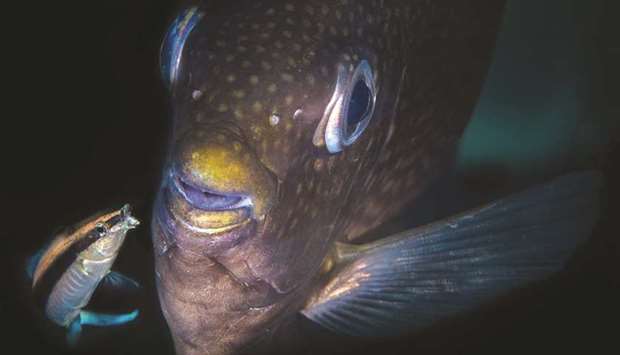Diving and underwater photography is a combination of sport and social activity. Besides, it also has an important economic and environmental dimension. The number of divers is increasing every day and around a million new certified divers get into the mix annually according to the Professional Association of Diving Instructors (PADI). This is a boost for the tourism industry as well.
In the image on the right taken in the southern coast of Qatar (Khor Al Udeid), you can see the Blenny fish. In terms of personality, few fish groups compare to the Blennies. Combined with a good temperament and hyper-alertness, their daring antics make them quite entertaining to watch.
However, given their small size, alacrity and shyness, it is quite difficult to capture them on camera. I have used macro lens for sharper details here. Once you’ve spotted a Blenny, you need to be quick and ready in the right spot with the right camera equipment whilst having the right distance so that you do not lose focus, especially on macro photography. To take this photo, I have used Canon 1Dx Mk2 + Canon 100mm macro lens + Sea & Sea Strobe.
(Part-II of this series will appear in tomorrow’s edition).
— Text and picture by Khaled Zaki, a diving consultant, PADI ambassador, and UW photographer, @khaledzakidiving

All rabbitfish have large, dark eyes and small, somewhat rabbit-like mouths, which gives them their name. Most species have either bright colours or a complex pattern. The largest rabbitfish grows to about 53cm, but most species only reach between 25cm and 35cm. Another unusual feature among rabbitfishes is their pelvic fins, which are formed from two spines, with three soft rays between them. The dorsal fin bears 13 spines with 10 rays behind, while the anal fin has seven spines and nine rays behind; the fin spines are equipped with well-developed venom glands. The sting is very painful, but it is generally not considered medically significant in healthy adults. Source: Wikipedia


